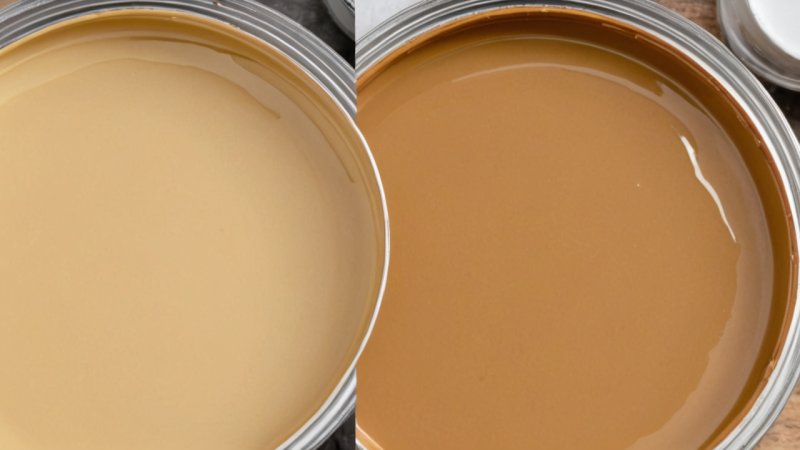Choosing the right type of paint for your project can significantly affect the outcome, durability, and overall appearance of the finished product. Two of the most common types of paint are oil-based and water-based paints, each offering unique properties and benefits. This article will compare these two paint types, examining their advantages, disadvantages, and best applications to help you make an informed decision for your next DIY project.
Composition and Drying Time
One of the primary differences between oil-based and water-based paints lies in their composition. Oil-based paints contain organic solvents that give them their durability and rich finish, whereas water-based paints use water as a solvent, making them more eco-friendly.
Oil-Based Paints
Oil-based paints typically have a longer drying time. They require several hours to become touch-dry, and complete curing can take up to a week. This slow drying time allows for smoother application and blending, making them ideal for detailed work.
Water-Based Paints
On the other hand, water-based paints dry much faster, often becoming touch-dry within an hour. This rapid drying time means you can complete projects more quickly and clean up with soap and water, making them a convenient choice for many homeowners.
Durability and Finish
When it comes to durability and finish, each paint type has its strengths and weaknesses that can influence your choice.
Oil-Based Paints
Oil-based paints are renowned for their durability and ability to withstand wear and tear, making them suitable for high-traffic areas or surfaces that require a tough finish. They also provide a smooth, glossy finish that can enhance the appearance of woodwork and furniture.
Water-Based Paints
While water-based paints may not be as durable as oil-based options, they have improved significantly over the years. They are less prone to yellowing over time and typically offer a more matte or satin finish, which can be preferable for modern aesthetics.
Application and Cleanup
The ease of application and cleanup is a significant consideration for many DIY enthusiasts.
Oil-Based Paints
Applying oil-based paints requires careful handling due to their strong odors and the need for solvents for cleanup, such as mineral spirits. Proper ventilation is essential when working with these paints, and it's crucial to wear protective gear to avoid inhaling fumes.
Water-Based Paints
In contrast, water-based paints are much easier to apply and clean up. They have a lower odor, and brushes and tools can be cleaned with just soap and water, making them a user-friendly option for both beginners and experienced painters.
Environmental Impact
As awareness of environmental issues grows, many consumers are becoming more concerned with the ecological impact of their paint choices.
Oil-Based Paints
Oil-based paints typically contain higher levels of volatile organic compounds (VOCs), which can contribute to air pollution and have adverse health effects. Proper disposal of leftover paint can also be a concern.
Water-Based Paints
Water-based paints generally have lower VOC levels, making them a healthier choice for indoor projects. They are often considered more environmentally friendly due to their water-based formulation and easier cleanup process.
Cost Considerations
Cost is another factor that can influence your choice between oil-based and water-based paints.
Oil-Based Paints
Oil-based paints tend to be slightly more expensive than their water-based counterparts, partly due to their durable nature and longer-lasting finish.
Water-Based Paints
Water-based paints are often more budget-friendly and widely available, making them a popular choice for casual DIY projects and home improvement tasks.
Best Applications
Choosing the right paint type also depends on the specific application and project requirements.
Oil-Based Paints
Oil-based paints are ideal for surfaces that require durability, such as trim, doors, cabinets, and metal surfaces. They work well in areas that experience high humidity or wear, such as kitchens and bathrooms.
Water-Based Paints
Water-based paints excel in applications requiring quick drying and easy cleanup, such as walls, ceilings, and furniture. They are excellent for projects in living spaces where low odor and fast completion are critical.
Conclusion
In summary, both oil-based and water-based paints have their advantages and disadvantages, making them suitable for different projects and preferences. Oil-based paints offer durability and a rich finish, making them ideal for high-traffic areas and detailed work, while water-based paints provide quick drying times and ease of use, making them a popular choice for everyday DIY projects. Ultimately, your choice will depend on your specific needs, the project at hand, and your personal preferences. Consider factors such as application, durability, environmental impact, and cost when making your decision to ensure the best results for your painting endeavors.






